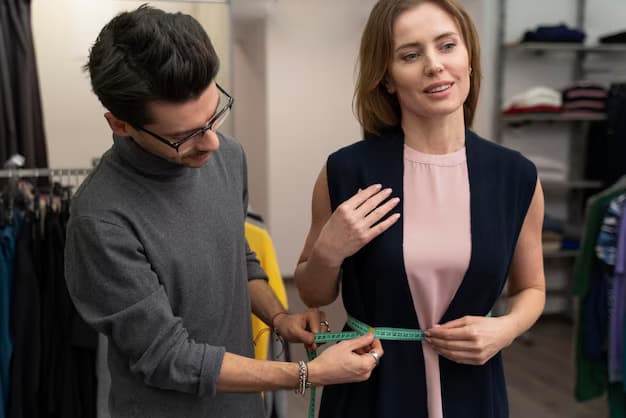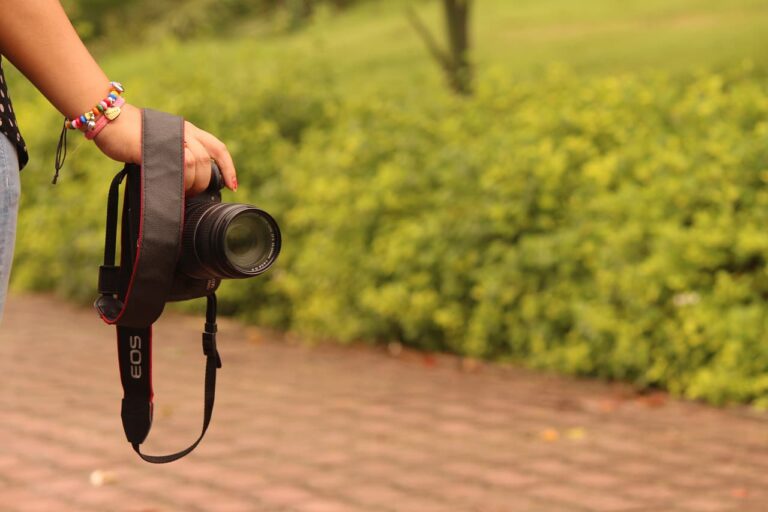The world of fashion is ever-evolving, and with it, the role of a stylist has gained paramount significance. But what does it truly take to step into the glamorous yet demanding world of styling? This article unfurls the tapestry of the stylist’s journey, guiding you from square one to success!
Understanding the Realm of Styling
Entering the world of style transcends the simplistic notion of combining shirts with pants. It’s an intricate art form that revolves around aesthetics, suitability, and individuality.
The Stylist’s Role
At its core, a stylist is more than someone who selects outfits. They’re visual storytellers. A stylist ensures the look resonates with the client’s personality, the event’s nature, and the image one aims to project. They’re often a bridge between the fashion world and an individual or brand, translating visions into wearable art.
Types of Stylists:
- Personal Stylists: These experts work one-on-one with clients, helping them curate a wardrobe that flatters their body type and aligns with their personal style.
- Editorial Stylists: Working predominantly for magazines, they are responsible for creating the look in photoshoots, defining the visual storyline of a fashion spread.
- Celebrity Stylists: These pros are in the limelight, working with A-list celebrities for red-carpet events, movie premieres, and more.
- Wardrobe Stylists: Often found on movie or TV show sets, they ensure characters’ costumes align with the story’s setting, era, and personality.
Which avenue aligns with your passion?
Essential Skills and Qualities
Ever wonder what distinct traits set top stylists apart?
- Eye for Detail: Much like an artist noticing subtle brush strokes or a jeweler identifying minute imperfections in gemstones, a top-tier stylist possesses an uncanny ability to discern what elevates or diminishes a look.
- Adaptability: The fashion realm is as unpredictable as the weather. While bell-bottoms were a hit in the 70s, they became a fashion no-no in the 90s, only to resurface later. The capacity to evolve with these shifts is crucial.
- Communication: This isn’t just about speaking. It’s about listening, interpreting, and translating. When a client vaguely states, “I’m looking for something bold,” it’s the stylist’s role to extract the specifics from such statements and bring them to life.
Academia and Training
Raw talent is a gift, but structured knowledge refines this talent, equipping you with industry insights and technical prowess.
Fashion Schools
Premier institutions such as Parsons, FIT, and Central Saint Martins offer comprehensive courses that delve deep into fashion history, garment construction, and design principles. But are they indispensable? They give you a foundation, but remember, several icons in the fashion world have carved niches without formal degrees.
Internships
Academia gives you theory; internships offer practicality. It’s where you witness the symphony (and sometimes chaos) of fashion unfold. Assisting established stylists, understanding client interactions, and grasping the nuances of project execution can be pivotal.
Building Your Portfolio
Think of your portfolio as your visual résumé. It’s the tangible manifestation of your style philosophy and expertise.
Photography Matters
A stellar style can be undermined by poor photography. Collaborating with professional photographers ensures your work shines in the best light, both metaphorically and literally.
Diverse Looks
Diversity is more than just a buzzword; it’s a necessity in a stylist’s portfolio. From boho-chic summer looks to power-packed corporate attire, it’s essential to display versatility.
Networking: Your Golden Key
In many professions, it’s not just about what you know, but also who you know. And fashion is a glaring testament to this adage.
Fashion Shows
Beyond the glitz, runway shows are networking goldmines. They’re where designers, models, stylists, and photographers converge.
Social Media Presence
Platforms like Instagram aren’t just for influencers. They’re digital portfolios, networking tools, and trend observatories rolled into one. Actively engaging, showcasing work, and connecting with peers can open unforeseen doors.
Staying Updated: The Lifeline of a Stylist
Fashion is dynamic. And staying updated isn’t just beneficial; it’s vital.
Fashion Magazines
Periodicals like Vogue, GQ, and Elle aren’t just leisure reads. They’re encyclopedias of evolving trends, designer insights, and global fashion movements.
Travel
While not always feasible, traveling can be an eye-opener. Each region, from the alleyways of Paris to the markets of Marrakech, offers unique sartorial inspirations.

Earnings and Compensation
Fashion and finance are inextricably linked. But how does the monetary aspect of styling play out?
Starting Out
As with most professions, initial earnings might be modest. Building a robust client base, enhancing reputation, and consistently delivering quality can take time.
Reaching the Top
The pinnacle of styling can be lucrative. Top stylists can command hefty fees, partner with luxury brands, and even get invited (expenses covered) to international fashion events.
Average Earnings Table
| Experience Level | Earnings (per annum) |
|---|---|
| Entry-Level | $25,000 – $50,000 |
| Mid-Level | $50,000 – $100,000 |
| Expert-Level | $100,000 and above |
The Future of Styling
In a digitized world, even the fashion domain isn’t impervious to technological transformations.
Digital Revolution
As technology seeps into every facet of our lives, virtual fitting rooms and AI-driven style suggestions might soon be the norm. Stylists will need to adapt, merging their intuitive style sense with algorithmic suggestions.
Sustainability
With increasing consciousness about the environment, sustainable fashion is gaining momentum. The future stylist will not only curate looks but will also need to be informed about eco-friendly materials, ethical manufacturing, and sustainable fashion practices.
Tips for Aspiring Stylists
Every journey has its challenges, but armed with insights and determination, success is attainable.
Stay True
Amidst trends, client demands, and industry shifts, maintaining authenticity is paramount. Your unique style perspective is your signature – cherish and cultivate it.
Learn Constantly
The realm of fashion is vast, and there’s always something new around the corner. Engaging in continuous learning – be it through books, online courses, or workshops – ensures you stay ahead of the curve.
The Impact of Technology on Styling
The fusion of fashion with technology has become an integral part of the styling industry. From digital sketches to augmented reality (AR) trials, technology’s influence is undeniable.
- Fashion Apps: Applications like Procreate and Adobe Illustrator have transformed the way stylists visualize and plan outfits. Such tools allow for instant modifications, color palette experiments, and even digital fittings.
- Augmented Reality (AR): Virtual try-ons are gaining momentum, with AR allowing clients to ‘wear’ outfits digitally. This not only provides a preview but also aids in making informed purchasing decisions.
- Artificial Intelligence: AI-driven platforms can analyze vast datasets, discerning patterns and predicting future trends. For stylists, this means an added layer of insights when planning future looks.
- Wearables: The rise of smartwatches, AR glasses, and tech-integrated apparel is changing the fabric of fashion. Stylists need to consider not just the aesthetic, but also the functional and technological aspects of wearables.
The Role of Ethics in Styling
Ethical considerations in styling have transitioned from being niche concerns to mainstream imperatives. From sustainable sourcing to advocating for fair labor practices, the stylist’s role is more comprehensive than ever before.
Sustainable Fashion
More consumers are considering the environmental footprint of their purchases. As a stylist, recommending brands that prioritize sustainable practices can be both an ethical choice and a unique selling proposition.
- Eco-friendly Materials: From organic cotton to recycled polyester, the materials used in clothing matter. Familiarizing oneself with sustainable fabrics is crucial.
- Ethical Brands: Brands that champion fair labor practices, eschew child labor, and promote eco-friendly manufacturing should be on every stylist’s radar.
Cultural Sensitivity
In an interconnected world, being mindful of cultural appropriation is paramount. While fashion is about borrowing and reinventing, it’s vital to respect and acknowledge cultural origins.
Ethical Brand Table
| Brand Name | USP |
|---|---|
| Stella McCartney | Luxury fashion with sustainable practices |
| Patagonia | Eco-friendly materials and fair labor practices |
| Eileen Fisher | Organic materials and transparent sourcing |
Evolution of Men’s Styling
Historically, women’s fashion has often taken the spotlight, but men’s styling has seen a renaissance in recent years.
- Emerging Trends: From streetwear revolutions to the return of vintage aesthetics like the 70s disco and the 90s grunge, men’s fashion is diverse and ever-evolving.
- Versatility: The modern man’s wardrobe isn’t restricted to suits and casual wear. It encompasses a wide range, from athleisure to avant-garde.
- Accessorizing: Once limited to watches and cufflinks, men’s accessories now span hats, bracelets, layered necklaces, and even brooches. Understanding the subtleties of male accessorizing can set a stylist apart.
- Grooming: Styling isn’t limited to clothes. With the surge in men’s grooming products and the normalization of skincare routines for men, a holistic approach to male styling is essential.
Embracing Diversity in Styling
Diversity is the cornerstone of today’s globalized world. Embracing it within the realm of styling can offer not only a broader audience appeal but also a richer tapestry of ideas and inspirations.
Inclusivity in Size and Shape
The archaic notions of beauty are being challenged and redefined in today’s fashion industry. It’s no longer about fitting into a specific mold; it’s about celebrating every body type. As stylists, recognizing and promoting this inclusivity is paramount. By selecting outfits and designs that flatter diverse body types, a stylist not only uplifts their client’s confidence but also takes a stand against body-shaming and unrealistic beauty standards.
Celebrating Cultural Diversity
As borders blur, cultural amalgamations are becoming more evident in fashion. From the kimono-inspired outfits seen in Paris to African prints making waves in Milan, cultural motifs and designs are being celebrated globally. For a stylist, this presents an opportunity to blend global designs, creating looks that are both unique and culturally rich.
Gender Fluidity in Fashion
The lines dividing menswear and womenswear are blurring. Fashion houses are now regularly introducing gender-neutral collections, reflecting the broader societal acceptance of non-binary and gender-fluid identities. Stylists, by incorporating these trends, can push the boundaries of conventional fashion, crafting looks that transcend traditional gender norms.

The Environmental Impact of Fashion
With the spotlight on sustainability, understanding the environmental implications of fashion choices has never been more crucial.
Fast Fashion’s Footprint
Fast fashion, with its rapid turnaround of cheap clothing, has severe environmental consequences. From water pollution due to dyeing processes to the enormous carbon footprint of mass production, the impact is profound. A stylist’s role here can be pivotal. By promoting sustainable brands and discouraging the throwaway culture associated with fast fashion, they can guide clients towards more environmentally-conscious choices.
Sustainable Fabrics
Natural, organic materials not only feel luxurious but are also kinder to the planet. Materials like organic cotton, bamboo, and hemp are more sustainable alternatives to synthetic fabrics. Educating clients about these choices and their benefits not only adds depth to a stylist’s offerings but also aligns with the global shift towards sustainability.
Upcycling and Vintage Fashion
There’s a charm in reviving and repurposing old outfits. Vintage clothing isn’t just a nostalgic nod to the past; it’s also an eco-friendly choice. Instead of discarding old outfits, reimagining them can give them a new lease on life. As stylists delve into this, they can offer clients unique looks that are both eco-friendly and steeped in history.
Mental Well-being and Fashion
The connection between mental well-being and fashion might not be overt, but it’s profound. The way individuals present themselves can significantly influence their self-perception and confidence.
Therapeutic Aspects of Fashion
Dressing up can be a therapeutic experience. For many, it’s a form of self-expression, a way to showcase their personality, mood, or even aspirations. A stylist, by understanding this, can aid clients in finding outfits that resonate with their emotional state, providing not just a look but an emotional uplift.
Fashion and Self-esteem
The right outfit can be a confidence booster. Whether it’s a power suit for a crucial meeting or the perfect dress for a date night, when clients feel good in what they’re wearing, it translates to heightened self-esteem. A stylist’s role, thus, transcends mere fashion; it delves into boosting an individual’s self-worth.
Navigating Fashion Pressures
The fashion industry, with its often-unrealistic standards, can exert immense pressure. As people grapple with these expectations, stylists can be their anchors, guiding them to find their unique style, untouched by fleeting trends or imposed standards.
Conclusion
Embarking on the journey to become a stylist is an exhilarating blend of creativity, grit, and continuous learning. With passion as your compass and this guide as your map, the world of styling awaits your unique touch!
FAQs
Absolutely! While formal education can be beneficial, many renowned stylists have made their mark through sheer experience and talent.
It varies. Some gain recognition swiftly, while others take time. Persistence is key.
It can be. Niches like sustainable fashion or plus-size styling are booming. Find your passion and make it your niche!
Not necessarily. While it’s a plus, the primary role is curating looks, not creating garments.
In today’s digital age, it’s paramount. It’s your platform to showcase, network, and engage.







